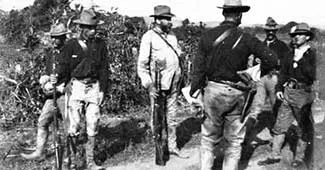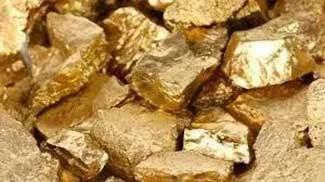Taysan: Historical and Folkloric Notes about some of its Barrios
This article is the latest in the series dedicated to folkloric and historic trivia about the barrios of Batangas. This time, we focus on those of the Municipality of Taysan.
The information contained in this article was culled from documents required by the administration of Elpidio Quirino in 1951 of all Department of Education districts around the Philippines to help reconstruct the country’s history after the destruction of historical and other documents during World War II. These documents are filed away at the National Library of the Philippines and available online to researchers.
Not all of Taysan’s barrios are included in this article. It is possible that some modern day barrios were still part of other barrios when the documents were created. It is also possible that either no documents were submitted for some barrios or, if there were, these had worn away over time.
Bacao
According to folklore, this barrio used to be called “Pook ng Batalan Bato” (The place Stone Bath), after a large stone on the riverside. There were also many trees called the “bacaowan,” and it was after these trees that the name of the barrio would be derived. (We wonder if the author meant “bakawan” meaning mangrove. Modern day Taysan, however, is inland and landbound.) The barrio used to be heavily forested and animals like deer and wild boar could be hunted from it. Settlers would clear the land and plant rice, corn, fruits and vegetables. Barrio folks were left pretty much on their own to live their lives during the Spanish and American regimes. During the Japanese occupation, some Japanese soldiers ventured into the barrio to scrounge for chickens and other foodstuffs but did not molest its inhabitants or damage properties.
Bilogo
This barrio’s name was supposed to have been given because of its shape, i.e. that of a circle. Bilogo was how the barrio was supposed to have been called even before the arrival of the Spaniards. The barrio’s original inhabitants were the Marasigans, Peradillias, Zamoras, Bisas, Ilagas and the Aldays. Large swathes of cultivated lands belonged to the Marasigans and the Bisas. During the latter part of the Spanish colonial era, it was not safe to live in a remote place such as Bilogo because there were so many bandits prowling the land to rob homesteads or take away cattle. When the Philippine-American War broke out, many people from the town of Batangas evacuated to this barrio to avoid the fighting.
 |
| Many people from Batangas town fled to Bilogo at the outbreak of the Philippine-American War. Image credit: Sandra Plummer Collection at the Fort Worth Library's Digital Archive. |
Bukal
This barrio was established around 1860 and was named after “a spring in the river from where people got water for home consumption.” It had two sitios named Balindes and Pulo ng Simon. Its original families were those of Evaristo Mayo, Agaton Bianzon, Silvino Favorito, Juanito Luancing, Joaquin Bianzon, Francisco Escala, Herminigildo Tagle, Anaceto Villena, Simon Cuartero and Jose Perea. History had been kind to Bukal in that the only incident of note in its past was the burning of houses by the so-called Macabebe Scouts during the Philippine-American War.
Dagatan
The barrio’s name was supposed to have been taken from a small pond to the south of its territory which was something of a watering place for wild hogs. The pond was referred to as “dagat-dagatan” (a make believe sea or lake). Its two sitios were Malabo and Kurva, the former named after a murky stream and the latter after a curvature in the road. Very few families settled Dagatan in the old days because it was basically a hunting place for deer and wild boar.
During the Philippine-American War, American Soldiers with Macabebe Scouts camped in the barrio and fights often broke out between them and Filipino freedom fighters. In World War II, the Batangas Town1 guerrilla group built its headquarters in the barrio, which therefore was well protected against Japanese atrocities. In 1950, Dagatan was the command post of the Philippine Ground Forces which were tracking down the men of Gen. Francisco Medrano2, who took arms in protest against Elpidio Quirino’s allegedly spurious election victory over Dr. Jose P. Laurel. Medrano and his men surrendered in Dagatan’s elementary school.
 |
| Dagatan was supposed to have been named after a pond where wild hogs bathed. Image credit: Ravenfield Ponds. |
Mabayabas
Needless to say, this barrio was named after the guava trees that used to grow in abundance in the area. Its two sitios were Calbang3, named after a species of dwarf bamboo, which presumably grew in abundance in the area; and Loob, so named because it used to be a meeting place for “tulisanes” or brigands during the Spanish era. This was why there were frequent attacks on Spaniards and rich merchants in the town of Taysan. The barrio’s original families were the Capilis and the Amadas.
During the Japanese occupation, many of the barrio’s inhabitants were killed by soldiers of the Japanese Army. Houses were burned and beasts of burden forcibly taken. Immediately after liberation, families who had evacuated to the hills came down to the barrio to rebuild their houses and attempted to resume their lives.
 |
| Sitio Calbangan was named after a species of dwarf bamboo similar to the one above. Image credit: by Stan Shebs, CC BY-SA 3.0, https://commons.wikimedia.org/w/index.php?curid=173293. |
Mahanadiong
Mahanadiong was supposed to have been named after the hanadiong tree (alternatively called the “anabiong4”), which presumably grew in abundance in the area. The barrio was established in 1815. Its original families were those of Lucas Barza and Isabel Cuartero; Mariano Marquez and Candida Bagsic; Gervasio Rabano and wife Eusebia; Sesinando Umali and Teodora Braza; and Victor and Candida Umali. Soon after the end of the Philippine-American War, the barrio was swept by a cholera epidemic and the agricultural fields were destroyed by swarms of locusts. In February of 1944, seven men from Rosario were shot and bayoneted by Japanese soldiers by the Mahanadiong River. Houses in the barrio were burned by the Japanese.
Mapulo
According to folklore, the barrio’s name was given because of the islets that once composed it, which have become hills. Because there were also plenty of limestones in the barrio, it was sometimes alternatively referred to as “Apog Mapulo.” The barrio’s original families were those of Juan and Margarita Manalo; and Juan Dapoc. During the Spanish era, cholera and smallpox outbreaks occurred. During World War II, inhabitants of the barrio fled elsewhere to avoid the rigors of war.
Mataas na Lupa
This barrio supposedly got its name because of its elevation. In fact, the Spaniards allegedly referred to it as “alta tierra” or higher ground. The barrio was established in 1872 and was first settled by Spanish friars. Its original families were the Africas and the Perezes. In 1937, gold was discovered in the barrio and subsequently mined by the Antipolo Gold Mining Company. The company’s operations stopped during World War II because the Japanese commandeered the mines for their own use. In 1941, people of the barrio suspected of being members of the guerrilla groups were rounded up and killed by soldiers of the Japanese Army.
Panghayaan
It was said that the communities or sitios called Pook ng Kapitan, Kamalig, Putol and Kibkiban were all invited to come together with the big sitio called Panghayaan and become one barrio carrying the last sitio’s name. The barrio was populated by closely related families in the early days. These families were the Hornillas, Balbastros and the Panganibans. During the Philippine Revolution and the Philippine-American War, a few inhabitants of the barrio were killed. Houses were also burned, crops destroyed and cattle killed.
Piña
This barrio was composed of the sitios Buho, Libjo, Aswite and Conde Malabo. In the early twentieth century, most of the barrio’s lands belonged to an estate owned by one Tomas Ramirez. Thus, most of the barrio’s inhabitants did “not own a single foot of land.” In time, heirs of Ramirez started to sell their shares of the land so that by the fifties, Piña was no longer an estate or hacienda.
Pinagbayanan
According to folklore, there was a pre-Hispanic town in the place but which nobody could name. Hence, it was just loosely referred to as Pinagbayanan, or where a town was built. The town was supposedly transferred to Rosario by the Moros who came from Lobo. In the old days, the barrio was heavily forested and there abounded in the forest deer and wild boar. During the Philippine Revolution, a battle took place in the barrio between Spanish forces and rebels led by Captains Marcelino Manalo, Sanchez, Gregorio Farol and Geronimo Hornilla. In World War II, the barrio became the hiding place of guerrillas under the command of one Colonel Isidro Sulit. Japanese soldiers also came to barrio and took away any man they met along the way. The guerrillas retaliated by killing three Japanese soldiers in Rosario.
 |
| In the old days, deer could be hunted in the forests of Pinagbayanan. Image credit: Philippine Mammals Treasure Troves. |
San Isidro
San Isidro was once part of another barrio, Bukal. Its name, according to the source author, was not given in honor of the saint of the same name or any person but was given by the municipal board of Taysan during the administration of one Felix Ona. The source failed to explain who or what the San Isidro was, however. The barrio’s original families those of Gregorio Carag, Lorenzo Carag, Agaton Bianzon, Placido Ramirez, Fernando Lontok, Lorenzo Lontok, Valentino Gutierrez, Benedicto Subye, Valeriano Dizon and Prudencio Ramirez.
In 1901, the barrio was still very much forested and there were just a few huts built. When the American soldiers came, they burned what few huts there were. The people had retreated to the hills in fear of the Americans. Soon, however, they returned to the barrio to build new huts and live peacefully under the American regime. In World War II, Japanese soldiers came and burned some houses; but by and large San Isidro was spared from the greater damages caused by the war.
San Marcelino
Barrio San Marcelino was established in 1902. Its original families were those of Herman Marquez, Leon Bautista, Juan Bautista, Agustin Bautista, Zoilo Bautista, Benito Bautista, Casimero Ramirez, Agustin Katigbak, Dalmacio Bagon, Juan Maderazo, Felipe Estoye and Leodigario Kasilag. During the Philippine-American War, some homes suspected to have belonged to Filipino freedom fighters were burned to the ground. The American soldiers also shot and killed cattle belonging to the people of the barrio. In World War II, Japanese soldiers accompanied by their Filipino accomplices fought a battle in the barrio with a Filipino guerrilla group.
Santo Niño
This barrio used to be called “Malabo” or murky. According to folklore, the barrio’s inhabitants frequently went to the town of Batangas for their everyday needs. It was because of this that the barrio’s folks decided to name their home after the Santo Niño, the patron saint of the town of Batangas. The barrio’s original families were the Asis, Ans, Curas, Hornillas, Villanuevas, Ramoses, Lontoks, Gutierrezes, Batolas, Ebreos, Hernandezes and Reyeses. During World War II, the barrio was relatively left untouched by the war except on days when rumors would spread that the Japanese troops were close by. Then the barrio’s inhabitants would scamper for the hills and stay there for hours until it was ascertained that there was no more danger from any Japanese soldiers.
Tilambo
This barrio used to be called “Tambuan” after the tambo5 reed that used to grow in abundance in the area. Presumably, its present name was also taken from the same plant. The barrio’s original families were those of Pablo Bianzon, Catalino Bianzon, Guardiano Espina, Jose Esguerra, Hilario Bianzon and Baltazar Ramirez. The barrio was another hideout for the tulisanes or bandits during the Spanish era. During the Philippine Revolution, one Felipe Calingatan, a captain of the Filipino rebels, was killed in the barrio by Spanish troops. During the Philippine-American War, Macabebe Scouts burned the houses in the barrio because its inhabitants were reluctant to enter the concentration camps that the Americans had built for them. In World War II, Japanese soldiers burned 13 houses in the barrio and raped one young woman.
Notes and references:
1 Batangas Town appears to have been an arm of the Filipino American Irregular Troops or FAIT. “Alphabetical List of Guerrilla Units and Their File Codes in the Guerrilla Unit Recognition Files,” online at the United States National Archives.2 “History and Cultural Life of the Poblacion Batangas Town,” online at the National Library of the Philippines Digital Collections.
3 Definition of “calbang” verified from “Census of the Philippine Islands: Taken Under the Direction of the Philippine Commission in the Year 1903,” online at Google Books.
4 “Anabiong,” online at the Philippine Medicinal Plants.
5 The tambo, scientific name phragmites vulgaris, is a reed used for the making of brooms. “Tambo,” online at the Philippine Medicinal Plants.


